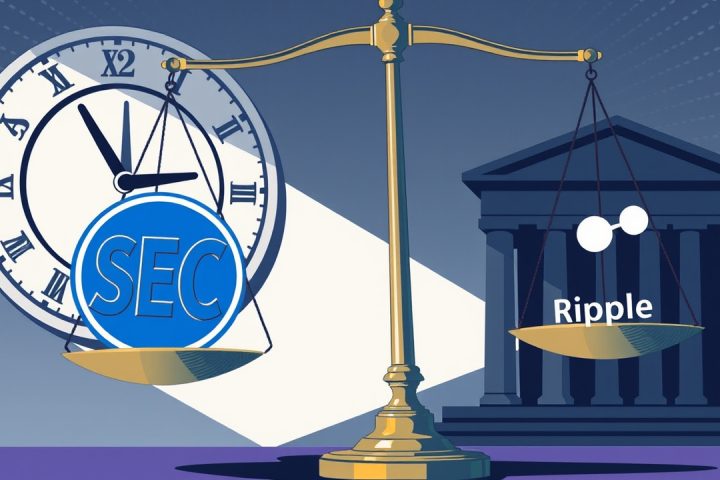Statement Summary
The recent roundtable discussion highlighted the transition of securities from traditional databases to blockchain technology, illustrating the potential of tokenization to transform the securities market. This evolution can enhance liquid capital formation and automate processes like dividend distribution through smart contracts. However, regulatory frameworks need to adapt, as current SEC rules may hinder innovation and compatibility with blockchain assets. The Commission aims to create clear guidelines for the issuance, custody, and trading of crypto assets to foster growth while ensuring investor protection.
Key initiatives include a focus on rational custodial frameworks, expanding trading options, and collaborative efforts through the newly established Crypto Task Force. The goal is to position the U.S. as a leader in the global crypto market by developing a modern regulatory environment.
Original Statement
Thank you and good afternoon. I am delighted to speak to this distinguished group at today’s roundtable on tokenization. Thank you to the panelists for participating today. The topic of this afternoon’s discussion is timely as securities are increasingly migrating from traditional (or “off-chain”) databases to blockchain-based (or “on-chain”) ledger systems.
This movement of securities from off-chain to on-chain systems is akin to the transition of audio recordings from analog vinyl records to cassette tapes to digital software decades ago.
The ability to easily encode audio in a digital file format, which could readily be transferred, modified, and stored, unlocked tremendous innovation within the music industry. Audio was freed from its boundaries as a static, fixed-format creation. It suddenly was compatible and interoperable across a wide range of devices and applications. It could be combined, broken apart, and programmed to form entirely new products. This also led to the development of novel hardware devices and streaming content business models, greatly benefiting consumers and the American economy.
Just as the shift to digital audio revolutionized the music industry, the migration to on-chain securities has the potential to remodel aspects of the securities market by enabling entirely new methods of issuing, trading, owning, and using securities.
For example, on-chain securities can utilize smart contracts to transparently distribute dividends to shareholders on a regular cadence. Tokenization can also enhance capital formation by transforming relatively illiquid assets into liquid investment opportunities. Blockchain technology holds the promise to allow for a broad swath of novel use cases for securities, fostering new kinds of market activities that many of the Commission’s legacy rules and regulations do not contemplate today.
Regulatory Adaptation
In order for the United States to be the “crypto capital of the planet” as envisioned by President Trump, the Commission must keep pace with innovation and consider whether regulatory changes are needed to accommodate on-chain securities and other crypto assets. Rules and regulations designed for off-chain securities may be incompatible with or unnecessary for on-chain assets and stifle the growth of blockchain technology.
Key Priorities and Initiatives
A key priority of my Chairmanship will be to develop a rational regulatory framework for crypto asset markets that establishes clear rules of the road for the issuance, custody, and trading of crypto assets while continuing to discourage bad actors from violating the law. Clear rules of the road are necessary for investor protection against fraud – not the least to help them identify scams that do not comport with the law.
Three Areas of Focus
I mentioned three areas of focus for crypto asset policy – issuance, custody, and trading.
Issuance
First, I intend for the Commission to establish clear and sensible guidelines for distributions of crypto assets that are securities or subject to an investment contract. Only four crypto asset issuers have conducted registered offerings and offerings pursuant to Regulation A.
Issuers have largely avoided these types of offerings, in part, due to challenges in satisfying the associated disclosure requirements.
I am committed to the Commission charting a new course. The Commission staff recently issued a staff statement on disclosure obligations for certain registrations and offerings. However, existing registration exemptions and safe harbors may not be entirely fit-for-purpose for certain types of crypto asset offerings. I intend to get it done.
Custody
Second, I support providing registrants with greater optionality in determining how to custody crypto assets. Commission staff recently removed a significant impediment for companies seeking to provide crypto asset custodial services by rescinding Staff Accounting Bulletin No. 121.
It is important to provide clarity on the types of custodians that qualify as a “qualified custodian” under the Advisers Act and Investment Company Act. Additionally, it may be necessary to repeal and replace the “special purpose broker-dealer” framework with a more rational regime.
Trading
Third, I am in favor of allowing registrants to trade a broader variety of products on their platforms. Some broker-dealers seek to go to market with a “super app” that offers trading in securities and non-securities along with other financial services all under a single roof. I have asked the staff to explore whether further guidance or rulemaking may be helpful for enabling the listing and trading of crypto assets on national securities exchanges.
While the Commission works to develop a comprehensive regulatory framework for crypto assets, securities market participants should not be compelled to go offshore to innovate with blockchain technology. I am eager to coordinate with colleagues in President Trump’s Administration and Congress to make the United States the best place in the world to participate in crypto asset markets.
Thank you for your attention. I look forward to the discussions to follow.




